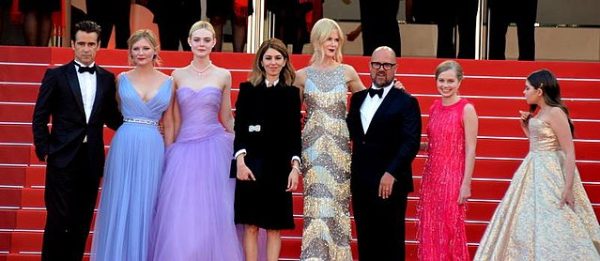Marie Antionette’s legacy has been synonymous with tyranny. In many ways, she is a physical manifestation of everything that was wrong with the French ruling class pre-Revolution. Her political reputation overshadows her humanity and conceptualizes her being.
The first instance where I saw Marie Antionette separated from this persona, was when I was in fourth grade. At the biannual scholastic book fair, I purchased a set of two books which I still own today. They were fictional accounts of the lives of European royalty in diary form, one telling the story of Anastasia Nikolaevna and another Marie Antionette.
Although the covers depicting the princesses in pastel gowns and towering were what initially caught my attention, the stories themselves were what kept it. While Anastasia, Marie, and I all had entirely different lives, at the end of the day, we were all just girls. That was something I could find comfort in.
I read those books front and back, from the dedication page to the author’s note at the very end. In it, they mentioned how the film Marie Antionette (2006) inspired their depiction of the character, prompting me to watch it myself. That was my introduction to the world of Sofia Coppola.
The film opens with Marie, played by Kirsten Dunst, leaving Austria. She sits in a carriage wearing an off white dress and a straight, anachronistic hairstyle. For a while she fawns over her fiancé (who she’s never met) with her ladies in waiting. They play cards and pass time like any normal group of friends.
Marie later arrives at the border between France and Austria. Per the French court’s customs, she is forced to leave behind all of her Austrian possessions, including the clothes she was already wearing. As Marie is stripped naked in front of strangers, the viewer comes to understand the jarring and uncomfortable nature of her transition from a simple princess to the Dauphine of France. She emerges onto the other side of the border in a blue dress, one that is distinctly French.
The scene continues with Marie back in a carriage, the camera panning out to moody shots of her gazing through the window. With this first scene, it is clear that Marie Antionnette, although based on history, is first and foremost a coming of age film. This shot is a Coppola classic, present in The Virgin Suicides (2000), Priscilla (2023), and Lost in Translation (2003)
Later through the famous “I Want Candy” scene as the Bow Wow Wow song plays in the background, Coppola is able to solidify Marie as a relatable character, rather than distant queen. Although I didn’t understand what it was like to feel the pressure of an entire government on my shoulders, I knew what it was like to use shopping to cope. As Marie surrounded herself with Rococo inspired Manolo Bhalnik’s and decadent desserts, rather than villainizing her excessive indulgence, I saw the struggle behind it.
Coppola has a unique ability to tap into the universal essence of womanhood. This is present throughout her filmography as she shows the stories of women through the ages.
Lost in Translation, which received four Oscar nominations, winning best original screenplay, tells the story of Charlotte, a young woman accompanying her photographer husband, John, on a trip to Tokyo. As he’s out working, Charlotte is left to amuse herself. This alienation prompts her own self-reflection, which is further heightened when John neglects her for the attention of Kelly, a model and singer.
Charlotte encounters Bob, a washed-up actor who is staying at the same hotel as her. The two share late night conversations and other fleeting moments of intimacy. They find solace in each other’s company, offering temporary refuge from the overwhelming sense of isolation that pervades their lives. Through this, Coppola shows how relationships and often a defining part of how women perceive themselves, cope, and understand their lives.
The Bling Ring offers a glimpse into the lives of teenagers named Rebecca and Marc, as they embark on a spree of breaking into the homes of celebrities like Paris Hilton and Lindsay Lohan. The film doesn’t sensationalize the burglaries but instead focuses on the psyche of these characters, their motivations, and the emptiness behind their glamorous façade. It explores their distorted perception of reality, influenced heavily by the media and celebrity culture, driving them to commit these crimes as a means to attain the lifestyle they so desperately idolize.
Coppola’s direction doesn’t pass judgment but rather observes the characters with a detached lens, allowing viewers to draw their own conclusions about the moral ambiguity of their actions. Through Rebecca’s character arc, Coppola offers a nuanced exploration of the pressures and contradictions that define contemporary womanhood. On one hand, Rebecca embodies the archetype of the empowered, self-assured young woman who refuses to conform to traditional gender roles or societal expectations. She exudes confidence and charisma, wielding her sexuality and charm as tools of manipulation and control.
However, beneath Rebecca’s outward bravado lies a sense of insecurity and existential angst. Despite her outward success and apparent self-assurance, she grapples with feelings of inadequacy and emptiness, seeking validation and meaning in all the wrong places. Her obsession with celebrity culture and material wealth serves as a desperate attempt to fill the void within, highlighting the ways in which patriarchal structures and societal pressures can shape women’s perceptions of self-worth and identity.

The Virgin Suicides, set in 1970s suburban America, revolves around the mysterious and tragic suicides of the Lisbon sisters: Lux, Cecilia, Bonnie, Mary, and Therese. Through the lens of the neighborhood boys who become infatuated with them, the film portrays the enigmatic allure and simultaneous isolation of the Lisbon sisters.
One of the central themes of the film is the exploration of femininity and the restrictive roles imposed upon young women by society. The Lisbon sisters are trapped in a world where their desires and autonomy are stifled by their overprotective parents and the conservative values of the time. They are largely defined by societal expectations and patriarchal norms, which ultimately contribute to their sense of disillusionment and despair.
Sofia Coppola portrays the complicity of the inner turmoil that comes with womanhood. Through the lens of the Lisbon sisters, she highlights the tension between conformity and individuality, innocence and sexuality, freedom and confinement. Each sister grapples with her own internal struggles, whether it’s Cecilia’s existential despair, Lux’s longing for connection and freedom, or Bonnie’s desire for escape from her physical limitations.
The film also explores the gaze and objectification of women through the perspective of the neighborhood boys, who project their fantasies and desires onto the Lisbon sisters, while remaining oblivious to their inner lives and the struggles they face. This juxtaposition draws attention to the disparity between perception and reality, highlighting the disconnect between how women are seen and how they truly are.
Despite critical acclaim and her ability to resonate with a wide audience, Coppola has been critiqued for primarily focusing on white narratives in her films. Particularly in terms of The Beguiled, where she chose to tell a civil war story with an all white cast, despite the fact that the source material included two black female characters. When asked about this, Coppola explained that she wanted to explore the gender dynamics of the era.
While excluding race as a factor places more of an emphasis on gender, it still contributes to the erasure of people of color’s stories, further marginalizing them. But at the same time, this raises the question if Coppola, a white woman, is equipped with the understanding to portray people, or more specifically women, of color in a nuanced way. By sticking to what she knows, Coppola has managed to avoid misrepresenting communities. However, the lack of diversity remains an issue as it contributes to an already very non-inclusive industry.
Regardless of this, Sofia Coppola’s portrayal of womanhood is remarkable. Characterized by sensitivity, depth, and authenticity in an industry full of one-dimensional female representation, Coppola’s films are refreshing. Through her evocative storytelling and visual aesthetics, she invites audiences to engage with the complexities and contradictions of the female experience, prompting reflection, empathy, and understanding.
Coppola has a unique ability to tap into the universal essence of womanhood.

